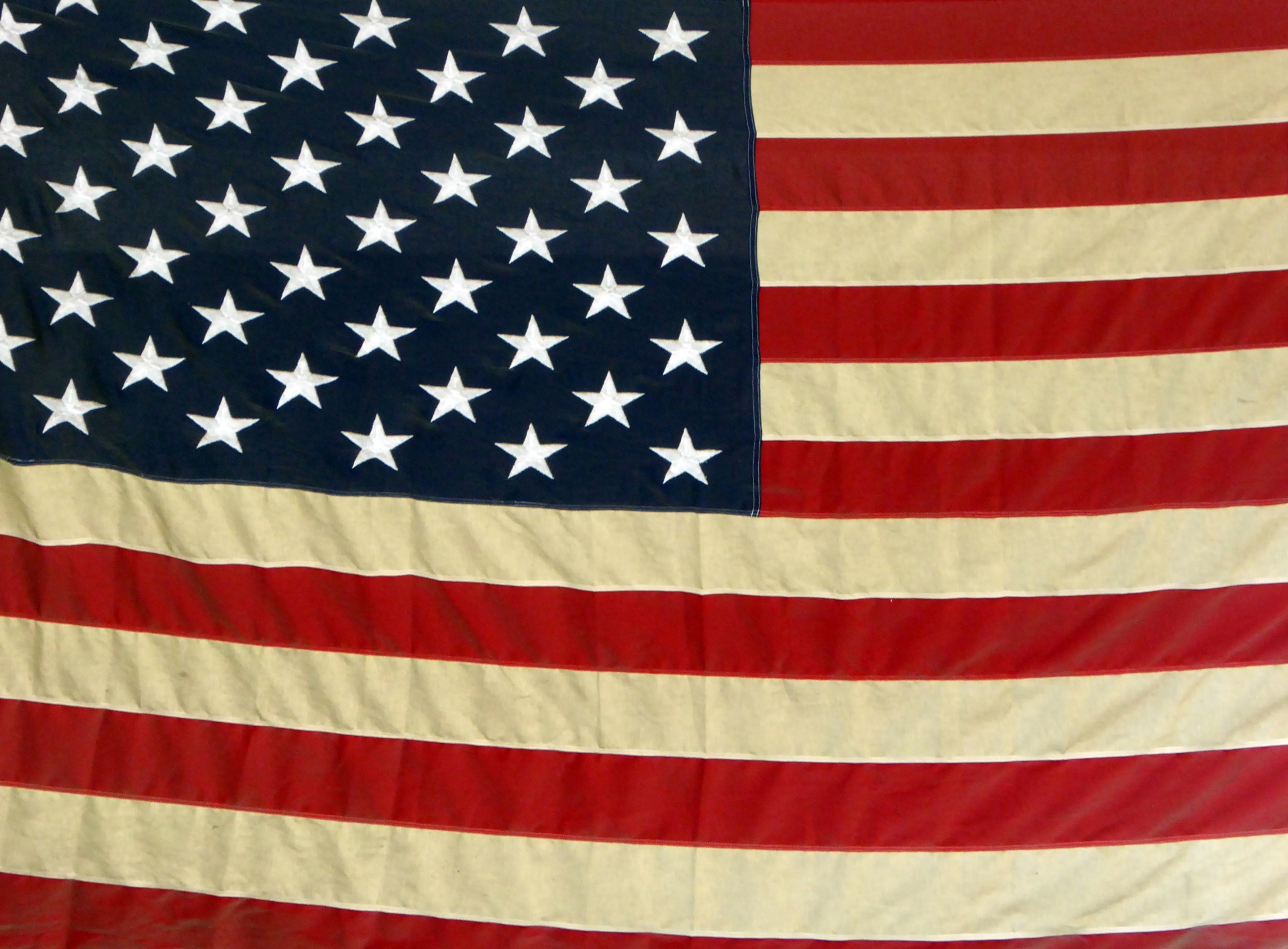Table Of Content
Famed seamstress Betsy Ross receives much of the glory for creating the American flag. However, many experts believe the person actually responsible for designing the first version of “Old Glory” was a founding father named Francis Hopkinson. Naturally, those skeptical of the fabled Betsy Ross story have gravitated toward other theories.
For federal agencies
While the Franklin flag might not be familiar to us today, it hasn’t been totally forgotten. The 111th Infantry Regiment of the United States Army, which was founded by Benjamin Franklin in 1747, is the only regiment authorized to carry it. It is also prominent on the crest of the naval ship USS John Paul Jones, and was featured on a postage stamp in 2000. Andrew Kuo I’ve designed a flag that acknowledges the emotions that informed where our country has been and the spirit of where it may go, with joy and forgiveness as possibilities. We can’t ignore how we got here, but maybe we can move toward a different, even better place.
Current state flags
Some are functional designs, others artistic renderings; some represent America as it could be, others how the artist sees the country now. The current American flag wasn’t designed by some large team of professional flag artisans. While Heft was attending high school, he was asked to design a new American flag for a project. Heft submitted his design to Congress, assuming it would be rejected. As history goes, however, Congress selected Heft’s design, thereby changing the American flag to its current variant consisting of 13 stripes and 50 stars.
Short History of the United States Flag
Hopkinson was appointed to the Continental Navy Board in 1776, and there is written evidence suggesting he used this time to work on the American flag’s design. With no clear documentation that Ross actually designed the flag, this stance moves us no closer to the truth. Ross purportedly designed a prototype according to these specifications, and it was later approved by Congress. After all, the only documented evidence that any of this happened is a barrage of circumstantial facts and an oral account.
Did Betsy Ross Really Make the First American Flag? HISTORY - History
Did Betsy Ross Really Make the First American Flag? HISTORY.
Posted: Wed, 02 Jul 2014 07:00:00 GMT [source]
With Washington in ruins, the British next set their sights on Baltimore, then America’s third-largest city. Moving up the Chesapeake Bay to the mouth of the Patapsco River, they plotted a joint attack on Baltimore by land and water. On the morning of September 12, General Ross’s troops landed at North Point, Maryland, and progressed towards the city. They soon encountered the American forward line, part of an extensive network of defenses established around Baltimore in anticipation of the British assault. During the skirmish with American troops, General Ross, so successful in the attack on Washington, was killed by a sharpshooter.
WASHINGTON — The U.S. Postal Service today announced many of the stamps it will issue in 2024. "Our current flag is problematic. I think we all know that. We've evolved into a more diverse state and I think it's more reflective of that," Walz said. "While Republicans are talking about this, I am going to be making sure our kids are eating and we're creating job creation. So they can debate it in the legislature, we will see where it goes." Some Minnesota Republican lawmakers announced earlier this month they want to halt the new flag's rollout and give Minnesotans a chance to provide more feedback on the design. The redesign commission spent four months considering more than 2,100 submissions from the public. Flag expert Ted Kaye, secretary of the North American Vexillological Association, told WCCO in December he gives the final design an A+.
Executive branch flags
The stamp art is a digital rendering of a manatee placidly lolling near the surface of the water. Derry Noyes, an art director for USPS, designed the stamp and booklet cover using illustrator Nancy Stahl’s original graphic design. Since 1777, the national ensign of the United States has also simultaneously served as its national flag.

Designer of Minnesota's new state flag isn't bothered by criticism: "It's an important change"
He presented this idea to the Historical Society of Pennsylvania in 1870 and stated that his aunt Clarissa Sydney Wilson, one of Ross’s daughters, told him the story in 1857. Today, there is no conclusive evidence supporting or denying this claim. Learn more about the evolution of the American flag and its earlier designs. With Wednesday marking Flag Day—which was celebrated as early as the late 1880s and which President Harry Truman made into a national day of observance in August 1949—let’s take a look at Hopkinson’s life and surprising connections to the flag. Though he was rejected, Hopkinson was only denied payment because “he was not the only one consulted” on the design of the flag.
Redesigning America's Flag: Six New Takes on Old Glory
The strongest piece of evidence that Ross created the flag is a receipt of more than 14 pounds paid to her on May 29, 1777 by the Pennsylvania State Navy Board. Nonetheless, it only said that the materials were for making “ships colours” — leaving any overwhelming proof to be desired. Born on Jan. 1, 1752 in Gloucester City, New Jersey, Elizabeth “Betsy” Ross posthumously gained fame for making the first American flag. The popularized narrative first became public in 1870 — about 94 years after she allegedly sewed it — when her grandson William Canby told the story to the Historical Society of Pennsylvania.
The watercolor background and the glimmer of the foil-stamped design and typography create a sophisticated look. The stamp features a portrait of Motley created by Charly Palmer. The stenciled circular shapes create a subtle crowning effect, and the heavy brushstrokes and scratches add texture to the acrylic-on-canvas work. Stenciled curlicues embellish the lower background and continue onto Motley’s black dress.
The Franklin flag became official in September of 1779, after the Battle of Flamborough Head. During the battle, the American Continental Navy ship Bonhomme Richard (named after Benjamin Franklin’s Poor Richard’s Almanac) captured the British ship, HMS Serapis. According to legend, when asked if he was ready to surrender, Continental Naval Captain John Paul Jones said, “Sir, I have not yet begun to fight! ” After the battle, the Continental Navy sailed to Texel, which was part of Dutch territory. When they arrived, British officials insisted that Jones be arrested for piracy, as the flag on the Serapis had fallen off in battle and the ship was now sailing without a flag. Based on the design that Franklin and Adams described, a flag was quickly made and a sketch was entered into the register of national ensigns.
Lancaster boy's American flag design still stands for U.S. - Lancaster Eagle Gazette
Lancaster boy's American flag design still stands for U.S..
Posted: Tue, 03 Jul 2018 07:00:00 GMT [source]
Republicans introduced three flag-related bills, including one pushing for a referendum on the design that would be put to voters. "And now it's considered one of the best flags in the world, so I have a feeling Minnesota with some time, they're going love this new flag." "It's different from all other U.S. state flags and actually most flags that I've seen," Kaye said. "This special stylized form of the state is a very unusual flag design element." Prekker's original design was modified by the the State Emblems Redesign Commission, which kept the North Star and abstract shape of Minnesota, but nixed the stripes and opted for all blue, which Prekker says represents water.
The local militia fled, and President James Madison and wife Dolley barely escaped. Red represents valor and bravery, white symbolizes purity and innocence, and the blue stands for vigilance, perseverance, and justice. Notably, Francis Hopkinson claimed he designed the first flag and Betsy Ross, because of her grandson, has been credited with constructing it.
The design of the Stars and Bars varied over the following two years. On May 1, 1863, the Confederacy adopted its first official national flag, often called the Stainless Banner. A modification of that design was adopted on March 4, 1865, about a month before the end of the war. In the latter part of the 20th century, many groups in the South challenged the practice of flying the Confederate Battle Flag on public buildings, including some state capitols. Proponents of the tradition argued that the flag recalled Southern heritage and wartime sacrifice, whereas opponents saw it as a symbol of racism and slavery, inappropriate for official display. The American flag we use today is not only the 27th version of this national banner, but it is also unlikely to have resulted from Betsy Ross’ work.
The U.S. flag features thirteen horizontal stripes of alternating red and white, seven red and six white. Hanukkah A new stamp celebrating the joyous Jewish holiday of Hanukkah will be issued in 2024. The art is a graphic depiction of a hanukiah, the nine-branch candelabra used only at Hanukkah, with all candles lighted, signifying the last evening of the holiday.
In 1818, the third Flag Act was signed that started the precedent of adding another star to the flag after each state’s entrance into the Union. In addition, this act reduced the number of stripes from fifteen to thirteen. During this time, other flags were flown to show support for Independence. This flag depicts a rattlesnake with the phrase “DONT TREAD ON ME” in a field of yellow. The Continental Marines used the Gadsden Flag during the early years of the war and the flag still flies today as a sign of American patriotism.

No comments:
Post a Comment